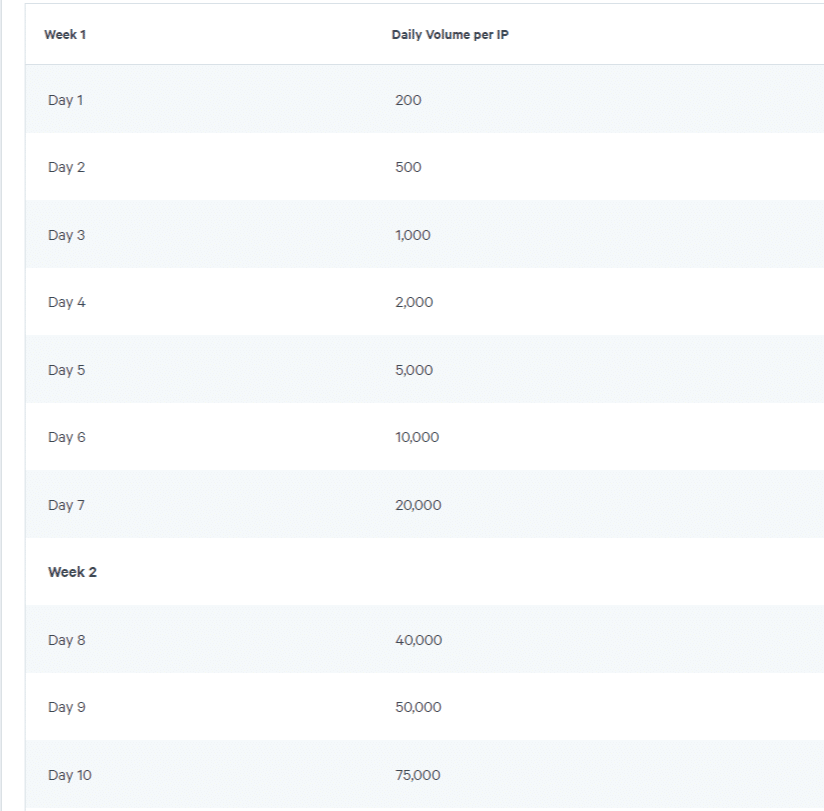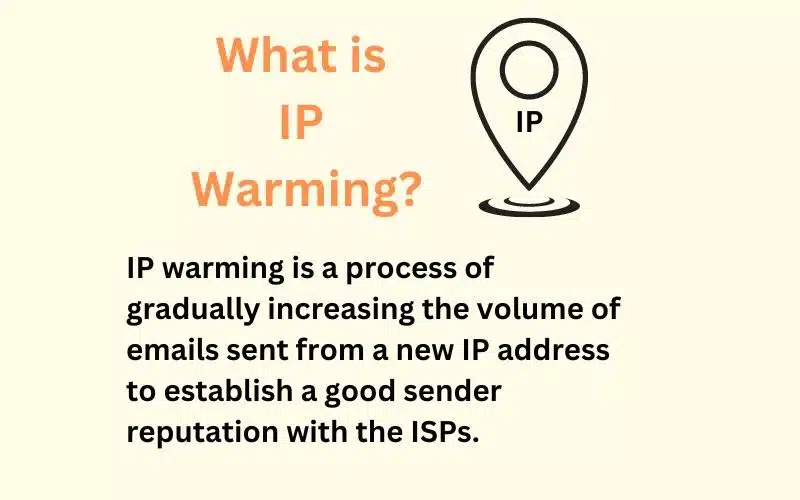What is IP Warming? A Comprehensive Guide
Are you an email marketer looking to increase your open rates and reach more customers? If that’s the case, you may be familiar with IP warming.
Email marketers use IP warming to gradually establish a reputation with Internet Service Providers (ISPs) in order to increase the likelihood that their emails will reach recipients’ inboxes.
We’ll go over what IP warming is, why it’s important, and how to incorporate it into your email marketing strategy in this comprehensive guide.
Table of Contents
Introduction to What is IP Warming?
At the point when you send messages to your subscribers, the ISPs examine your emails and choose whether to convey them to the recipient’s inbox, or spam folder, or reject them completely.
You need to build a good reputation with the ISPs in order to guarantee that your emails reach the inboxes of your recipients. IP warming is one approach to this.
What Is IP Warming?
IP warming is a process of gradually increasing the volume of emails sent from a new IP address to establish a good sender reputation with the ISPs.
When you start sending emails from a new IP address, the ISPs don’t have enough data to evaluate your email-sending practices.
As a consequence of this, they might mark your emails as spam or block them entirely, which would prevent them from reaching the inboxes of your subscribers.
IP warming involves gradually increasing the volume of emails sent from a new IP address over a period of time.
This gives the ISPs a chance to evaluate your email-sending practices and gradually increase your sender reputation The most important thing is to start with a small number of emails and increase the email-sending limit slowly.
Why Is It Important to Warm IP?
IP warming is essential because it helps you to build a good sender reputation with ISPs.
Your emails are more likely to be delivered to recipients’ inboxes rather than their spam folders if you have a good sender reputation.
In turn, this could help you get more people to open your emails and bring more people to your website.
ISPs may flag your emails as spam or block them entirely if you send a lot of emails from a new IP address without warming it up.
This could hurt your reputation as a sender and make it harder for your emails to get to the inboxes of your recipients in the future.
What is Snowshoe spamming? learn here
How Does IP Warming Work?
IP warming includes step-by-step increasing the volume of emails sent from new IP addresses over a period of time. The precise duration and volume are determined by your email-sending habits and ISP requirements.
The IP warming process involves gradually increasing the volume of emails sent from the new IP address and typically takes four to eight weeks. You can begin by sending between 100 and 500 emails per day and gradually increase the volume by 10 to 20% every few days. To keep a good reputation as a sender, you should keep an eye on your email deliverability and adjust the volume as necessary. Check the Sparkpost IP warming strategy.

IP Warming Best Practices
Email marketers who want to improve their email deliverability and build a good sender reputation with ISPs must use IP warming. However, sending a small number of emails at first and gradually increasing it is not sufficient. To ensure a successful IP warming process, it’s important to follow certain best practices. Some of the best practices for IP warming are as follows:
1. Start with a low number of emails,
Start with a low number of emails like 100 to 500 per day, and gradually increase it by 10 to 20% every few days as you warm up your IP address. The ISPs will be able to identify your IP address and evaluate how you send emails with this information.
2. Use a consistent sending schedule
Utilizing a consistent sending plan during IP warming can assist with building a good sender reputation. Every day, send emails at the same time and try not to send too many at once. It’s ideal to send messages in batches to avoid overwhelming the ISPs.
3. Send high-quality, engaging content
Improve your email deliverability during IP warming by sending content of high quality that is also engaging. This is because relevant and engaging content increases the likelihood that your emails will be delivered to the recipient’s inboxes by ISPs.
4. Monitor your email metrics
Monitoring your email metrics, such as open rates, click-through rates, bounce rates, and spam complaint rates, can help you identify any issues with your email-sending practices during IP warming. This can help you make adjustments to improve your email deliverability.
5. Follow email marketing best practices
Using email marketing best practices can help you improve your email deliverability and build a good sender reputation. This means using a subject line that is easy to read, avoiding spam triggers, and providing a clear link to unsubscribe. Learn email deliverability best practices
6. Use an email authentication system
During IP warming, using an email authentication system like SPF, DKIM, or DMARC can help you build a good sender reputation and make it easier to deliver emails. These frameworks can assist the ISPs with confirming that your messages are genuine and not spam.
7. Partner with an experienced email service provider
Partnering with an experienced email service provider can assist you in ensuring that the IP warming process is successful. They can furnish you with the essential tools and guidance to establish a good sender reputation and improve your email deliverability.
Quick Overview – Tips for a Successful IP Warming
Check the below suggestions, it will help you
- Begin with a low email volume and gradually increase it over time.
- First, send emails to your most active subscribers.
- Keep an eye on your email’s deliverability and adjust the volume as necessary.
- Use a consistent sending schedule and email frequency.
- Follow email marketing best practices, such as using a clear subject line, relevant content, and a clear call-to-action.
- Don’t send emails to email lists you bought or rented. Build your own list to get results better.
- Don’t switch IP addresses too often.
FAQs about IP Warming
How long does it take for IP to warm?
IP warming typically takes 4-8 weeks, yet the specific time period relies upon your email-sending practices and the ISPs’ necessities.
During IP warming, how many emails should I send?
Start with a low email volume, like 100-500 emails per day, and gradually increase it by 10-20% every few days.
If I have a good sender reputation with ISPs, can I skip IP warming?
Even if you have a good sender reputation with the ISPs, it is still recommended to perform IP warming if you are moving to a new IP address or changing your email service provider. This is due to the fact that the ISPs need some time to evaluate how you send emails from the new IP address.
If I don’t warm up my IP address, what happens?
ISPs may flag your emails as spam or block them entirely if you send a lot of emails from a new IP address without warming it up. This could hurt your reputation as a sender and make it harder for your emails to get to the inboxes of your recipients in the future.
How might I screen my email deliverability during IP warming?
Email metrics like open rates, click-through rates, bounce rates, and spam complaint rates can be used to track your email deliverability. You can also use email deliverability tools to check your email reputation and identify any issues with your email-sending practices.
Can I simultaneously warm up multiple IP addresses?
Warming up multiple IP addresses simultaneously is not recommended. This can confuse the ISPs and make it harder to build a good sender reputation. It is good to warm up IP one at a time and monitor your email deliverability before moving on to the next IP address.
Wrap Up
In conclusion, if email marketers want to improve their email deliverability and establish a good sender reputation with ISPs, IP warming is an essential procedure.
By slowly expanding the volume of emails sent from new IP addresses, you can assemble trust with the ISPs and increment your email open rates. Make sure to follow email best practices and monitor your email deliverability to guarantee an ensure IP warming process.
You May Also Like
What is snowshoe spamming?
What are spam traps and how to avoid them
14 mistakes to avoid in email marketing
What is email deliverability?
Email marketing FAQs
